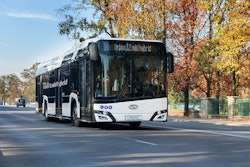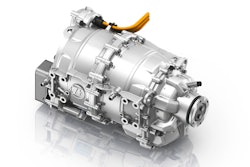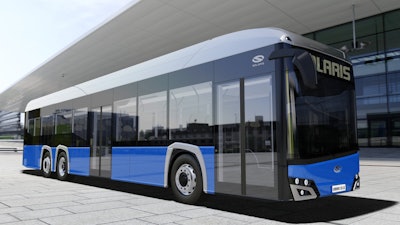
This year, Solaris will introduce a 15-m Urbino version to the electric bus portfolio. Up until now, the “electric offer” of Solaris encompassed only city buses; the 15-m version of the Urbino will also meet requirements of inter-city transport.
This year will see the manufacture of a completely new generation of the Solaris Urbino 15 LE model, created solely with zero-emission drivelines in mind. The bus will be certified and offered with specs characteristic for class I vehicles – as a city bus, and for class II vehicles – as a bus for inter-city transport.
The design itself of the tri-axle bus of 15 m is nothing new for the company. Solaris made its first tri-axle vehicles back in 1999 and to-date it has supplied nearly 1,300 of these vehicles to customers. However, these were models based on conventional diesel and on CNG engines.
“I am convinced that our latest design will be a response to the needs of European carriers in this segment. The premier of the bus is slated for this year,” announced Petros Spinaris, Vice President of Solaris.
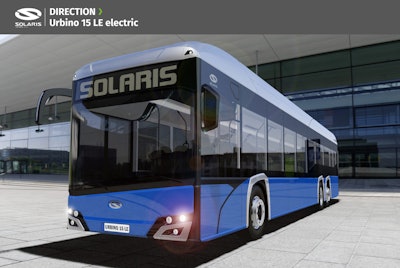
The decision to build a new bus was triggered not only by market interests, but also by the unprecedented technical progress with regard to electric buses, and in terms of energy storage in particular. Energy storage in the SU15 LE electric buses will be covered by Solaris High Energy+ batteries of the latest generation which was presented by Solaris last year. The new battery solution allows to offer a drive range on a single charging which will fulfill expectations of municipal and intercity carriers in any travel conditions.
The first two pre-series vehicles will be fitted with six battery packs with a total capacity of over 470 kWh. Two will be roof-mounted, whereas four will be placed in the back of the bus. The batteries in this model can be recharged by means of a plug-in, or, at the customer’s request, also using a pantograph. The options available will be pantographs mounted on the vehicle roof or inverted ones. Everything will be consistent with customer preferences and compatible with the existing or planned charging infrastructure.
The drive unit of the tri-axle Urbino version will be the liquid-cooled, 300 kW central electric motor CeTrax from ZF. The driveline will be moved to the second (middle) axle of the vehicle. In order to reduce the use of energy to a minimum, the manufacturer will implement SiC technology in the bus propulsion area.
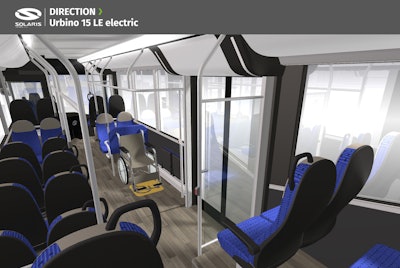
The first two Solaris Urbino 15 LE electric vehicles will be made chiefly with Scandinavian operators in mind. That is also why the buses will feature special solutions complying with Bus Nordic standards and the so-called Scandinavian package. This entails, among others, special solutions ensuring thermal comfort in the vehicle, lighting or a type of passenger seats dedicated to transport between cities. Interestingly enough, the bus will be also equipped with sander which is a solution familiar from the tram market mostly. The device enables movement even on the most icy or snowy of roads. In order to optimize the energy consumption, the Urbino 15 LE electric will be fitted with hybrid heating based on a heat pump, among others. What is more, the vehicle will contain solutions related to ADAS (Advanced Drivers Assistance Systems), i.e. automated systems of assistance for the driver, including the features MirrorEye or MobilEye Shield+.
“Even though we are building a new model of a low-entry electric bus, chiefly with Scandinavian markets in mind, we will certainly not limit our offer for that vehicle to those countries only. It will be available to all operators seeking a tri-axle LE bus for city and inter-city transport. It will also be a completely zero-emission alternative in this class for CNG-fuelled buses,” says Spinaris about the new product.
The low-entry electric buses will be available with a two-door (2-2-0) or three-door (2-2-1) outlay. The passenger seating capacity will amount to 55 persons for class II vehicles.




